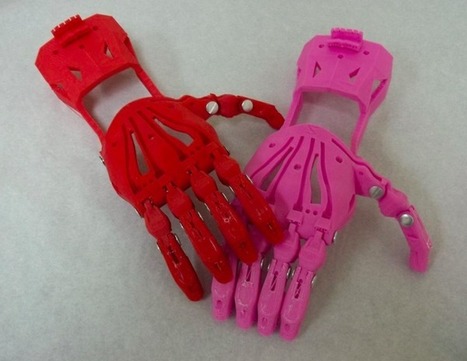A chance connection over the internet has spawned multiple efforts to provide 3D printed hands at an extremely low cost.
Around the world, there are people who have lost all or part of their hand, or were born without one. There are also people and institutions with 3D printers. Pair the two, and you can print a custom mechanical hand for $20-150 — thousands less than the typical prosthetic.
e-NABLE, which functions through a website, Facebook page and Google+ page, stepped up to connect the two after site founder Jon Schull came across work by American prop maker Ivan Owen, who made a metal mechanical hand for South African carpenter Richard Van As. Van As had lost four of his fingers in a carpentry accident.
Owen was then contacted by a mother whose 5-year-old son needed a hand. He again made a metal hand for the boy. But then he turned to 3D printing. MakerBot gave both Owen and Van As a 3D printer.
The pair developed a 3D printed hand for the boy and then posted the design to Thingiverse, where anyone could download and print it.
Van As and Owen’s efforts toward developing 3D printed hands live on via the Roboand project, which has created more than 200 hands and now branched into prosthetic fingers and arms. But Schull was interested in connecting people who needed hands with individual makers and institutions that had 3D printing skills, but potentially idle printers.
He started a Google+ page, and then a Facebook page and website. More than 300 makers make their services available to people who contact e-NABLE about a hand. Just a quick scroll through posts on the Facebook page reveals many, many people who have a use for a hand.
“I see e-NABLE as a crowd-sourced pay-it-forward network for design, customization and fabrication of all sorts of assistive technologies,” Schull told Rochester Institute of Technology, where he is a researcher. “This is a scalable model that could go way beyond 3D printed prosthetic hands.”



 Your new post is loading...
Your new post is loading...








Such a great idea. 3D printed prosthetics can be custom fit to the owner.
Awesome Samsung phones/accessories on www.bestsamsungphones.com
Interesting model for 'crowd sourced pay-it-forward network'